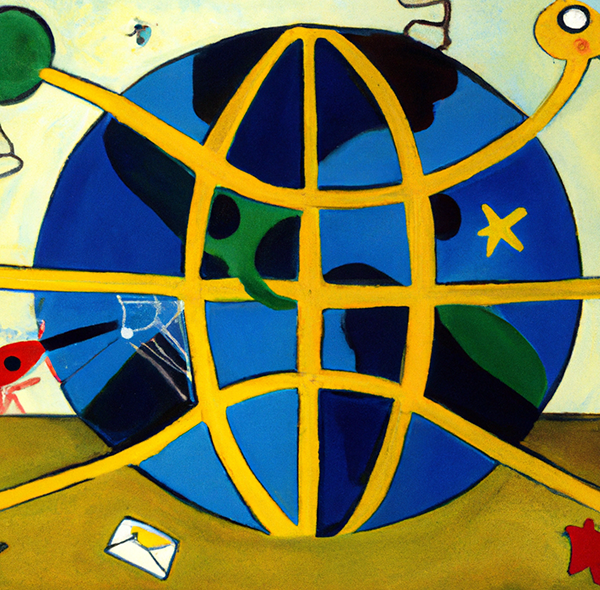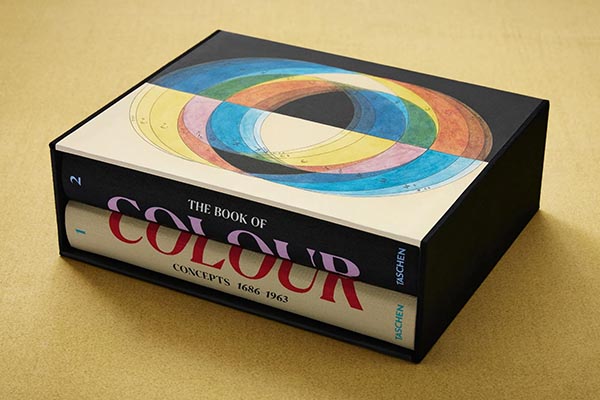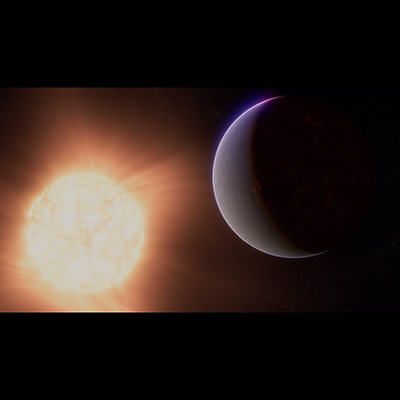
Cleansing the Palette
Via Print magazine, another tome for those building a color reference book library: Alexandra Loske and Sarah Lowengard’s The Book of Colour Concepts. It’s a two-volume set that exhaustively looks at “color as an essential life force.” “We can trace an active intellectual engagement with colour throughout human history,” writes Loske, “from simple concepts used in early art to highly developed systems rooted in modern science.”
Exploring 67 color “concepts” in nine chapters, in Vol. 1 the authors feature early charts and tables, circles, wheels and globes, the rise of color theory and nomenclatures and standards; Vol. 2 examines the teaching of color, the early 20th century, spiritualism, occultism and music, Eastern color concepts and, finally, the Bauhaus and beyond.

Lavishly illustrated and generously annotated, this book—published in three languages, as is Taschen’s trademark—is not for the faint of heart or the weak of muscle. The volumes are packed so tightly with beautiful art and essential information that reading them on one’s lap will result in 50 shades of black and blue.
Distributor Cap
Anyone in publishing—especially book publishing—knows that the biggest hurdle is not book writing or production but distribution. Sure, books can be easily sold on the web, but getting into physical bookstores remains a challenge without a distributor that can reach out to stores. And small and independent publishers don’t have the same access to big distributors like Ingram that the major publishers have. And now that challenge is only going to get worse. From the New York Times:
late last month, [Small Press Distribution] shocked its clients — about 300 small publishers — by announcing that it would abruptly close, leaving the presses scrambling to retrieve their inventory before the books were destroyed and wondering if they’d ever be paid the money S.P.D. owed them for past sales.
And it’s not just small publishers who are affected.
Small presses play a crucial role in the American literary landscape, publishing books that have artistic merit but little commercial potential — like poetry, for example, most of which doesn’t sell much. Without S.P.D., it could be far more difficult for small presses to get their books to readers, or for those books to exist at all.
…“This is going to be devastating for stores like City Lights and so many independents throughout the country that saw these independent presses as a really important part of what we do,” Yamazaki said. “A future where I’m going to lose relationships with anywhere from 85 to 90 percent of them is hard to contemplate.”
Hopefully someone will step in to fill the vacuum.
Generations
If you want to know what the kids today are up to, be sure to check out Deloitte’s brand new Global 2024 Gen Z and Millennial Survey.
Just under a third of Gen Zs and millennials believe the economic situation in their countries will improve over the next year, reflecting the most optimism respondents have shown about the economy since our 2020 study fielded just before the COVID-19 pandemic. This optimism is also reflected in Gen Zs’ and millennials’ outlook for their personal financial situations, although financial insecurity continues to plague these generations.
It would be interesting to dig up similar surveys of Gen Xers, Boomers, etc., and see if they had the same concerns at the same time of their lives. They probably would!
First-Class Male
Whilst watching a pre-pandemic episode of QI not long ago, one item concerned a fellow named Reginald Bray, who was nicknamed “The Human Letter” as he used to quite literally send himself through the mail. Born in 1879, he would go on to a career as an accountant, and, one day, he purchased the UK’s Post Office Guide—regulations and such for mailing and shipping. This triggered an almost Damascene conversion. Says Ladywell:
After discovering that the smallest item one could post was a bee, and the largest, an elephant, he decided to experiment with sending ordinary and strange objects through the post unwrapped, including a turnip, a bowler hat, a bicycle pump, shirt cuffs, seaweed, a clothes brush, even a rabbit’s skull.
He got more ambitious:
Another time, this prolific collector and postal prankster, gave a new meaning to the phrase hand delivered when he opted to mail himself for the third time in 1932, a feat that earned him the moniker, ‘The Human Letter’.
(And if you’re familiar with the Velvet Underground song “The Gift,” you know what the hazard of that can be.)
He even has a website devoted to him, because of course he does. If he were alive today he would no doubt try to email himself.
Transfer Portal
Well, this has a Guardian of Forever feel about it. Via Laughing Squid, Lithuanian artist Benediktas Gylysinstalled a livestreaming portal that connected New York City and Dublin, Ireland.
The Portal in New York City will be installed on the Flatiron South Plaza next to the famed Flatiron Building. In Dublin, the Portal will be installed facing the capital’s main street, O’Connell Street and will capture the iconic vista of both Dublin’s famous GPO building and the Spire together.

UPDATE: Well, someone had to go ruin it for everyone.
Graphene for Your Health
Was it a good week for graphene news? It’s always a good week for graphene news! Researchers have developed a new health diagnostic platform using graphene biosensor technology. From (who else?) Graphene-Info:
Tachmed, a UK-based developer of at-home digital healthcare solutions, has teamed up with experts in infection control at St George’s, University of London, to help accelerate the development of a new diagnostic platform for a range of health conditions, using graphene biosensor technology.
During the four-month collaboration, funded by an Innovate UK Accelerated Knowledge Transfer grant, Dr. Henry Staines, senior lecturer in global health at the Institute for Infection & Immunity at St George’s, will provide critical knowledge exchange. This is expected to boost development of the technology by optimizing Tachmed’s biosensor, which is required to confirm if a pathogen is present or not within a patient sample.
… The partnership will ultimately lead to the creation of at-home diagnostic tests supported by a platform that will automatically send results straight to the patient’s healthcare practitioner, with no need for the patient to interpret the results.
Do the Stroll
If you grew up in the 1970s or earlier, you know full well that no one ever wore a bicycle helmet (for some of us, that could explain quite a few things). Kids had long lived lives of peril—but one that looked even more perilous was, via Boing Boing, this baby stroller from the early 20th century.

The stroller consists of a metal frame, with wheels on the bottom. The baby had to stand inside of the metal frame, holding on to the sides for dear life as they got wheeled around.
And if the parent (or whoever) let go, down would go baby. Still, that kid must have grown up to have abs of steel.
The video on TikTok is even more disturbing.
Down at the Eel
They say men are from Mars and women are from Venus, but did you know that eels are from the Bermuda Triangle? It’s true! Atlas Obscura profiles Dr. Emily Finch—aka “Dr Eelmily Finch”—who has developed a passion for eels. (One would have thought finches would be the obvious choice, but perhaps not.) Among the eel facts they rattle off is:
“ALL the eels in Europe and America are born in the Sargasso Sea (in the Bermuda Triangle! Ominous? Yes). Eels might even live in a landlocked part of Europe and yet they will travel thousands of kilometres over land (yes, land!) and sea to get to the Sargasso Sea to spawn.”
And there are more. This is a horror movie waiting to be made:
“Eels just need a bit of dampness on the ground to travel over land. They can even CLIMB UP DAM WALLS! Have you seen how big dam walls are??!”
Eels By a Dam Site—coming to a streaming service near you.
Wherever eels live in the world, they just wake up one day, DISSOLVE THEIR STOMACHS, and decide to start their incredibly long journey to their spawning place. They travel all those many thousands of kilometres LITERALLY EATING THEMSELVES ALIVE FROM THE INSIDE!”
Ah, so that’s how Ozempic works.
Be sure to click through for more information that ever thought you’d need about eels.
But Softee!
If you are of a certain age (i.e., under 10), few things get you running faster in the summer than the sound of a Mister Softee ice cream truck (or basically any ice cream truck). For those of us much much beyond that age, at a certain point hearing it trundling around the neighborhood can easily drive one to insanity. If you are in the former camp, and want to know how far away the Mister Softee truck is, well, as they say, there’s an app for that. Says Food & Wine:
The main feature of the app is its map function. Its homepage is essentially an Apple map flooded with cartoonified images of Mister Softee trucks. You can enter your zip code or share your location — both options will show you how close you are to an ice cream truck. Click on an image of a truck, and you’ll find its name (usually something simple, like “Bronx truck 18”) and how long the truck has “been on the road for.”
Mister Softee as such is predominantly a New York thing, although there are there are 625 Mister Softee trucks across 18 states.
If your region is served (even soft served) by another brand of ice cream truck (perhaps Mr. Bunny or Mr. McCool), chek to see if they have an app. There’s nothing like stalking an ice cream truck.
Around the Webb, Part the Infinity: Coming Up for Air
Well, OK, maybe not air, exactly, but an atmosphere at least. The James Webb Space Telescope has turned its eyes toward 55 Cancri e, one of five planets orbiting the star 55 Cancri in the constellation Cancer. The planet is also known as Janssen, maybe because it’s chasing the one-armed man as it orbits its sun. (OK, that was a reach.)
At any rate, obscure Gen X-oriented jokes aside, the planet has a diameter nearly twice that of Earth and a density slightly greater. Astronomers classify it as a “super-Earth”: larger than Earth, but smaller than Neptune. Its surface is believed to comprise a bubbling ocean of magma—but it may have an atmosphere, although it is likely composed of carbon monoxide and carbon dioxide.
The team thinks that the gases blanketing 55 Cancri e would be bubbling out from the interior, rather than being present ever since the planet formed. “The primary atmosphere would be long gone because of the high temperature and intense radiation from the star,” said Bello-Arufe. “This would be a secondary atmosphere that is continuously replenished by the magma ocean. Magma is not just crystals and liquid rock; there’s a lot of dissolved gas in it, too.”
While 55 Cancri e is far too hot to be habitable, researchers think it could provide a unique window for studying interactions between atmospheres, surfaces, and interiors of rocky planets, and perhaps provide insights into the early conditions of Earth, Venus, and Mars, which are thought to have been covered in magma oceans far in the past. “Ultimately, we want to understand what conditions make it possible for a rocky planet to sustain a gas-rich atmosphere: a key ingredient for a habitable planet,” said Hu.

The things we can do.
Pigs on the Wing
For fans of 1970s progressive rock, London’s Battersea Power Station is inextricably associated with the iconic cover of Pink Floyd’s 1977 album Animals, which featured a giant inflatable pig hovering above the towers. (In the days before Photoshop, the design house Hipgnosis actually had to suspend a rubber pig up there and photograph it. (As it happened, the rope holding the pig snapped and it flew away, resulting in Heathrow Airport having to ground all flights.)
The album was remixed in 2018, and Hipgnosis’ Aubrey “Po” Powell updated the cover—and shot some drone footage of the station—which was itself recently refurbished. (By the way, one of the architects of the station was Giles Gilbert Scott, who had previously been known for designing Britain’s iconic red telephone boxes. The plant was decidedly a step up…)
Powell set his drone footage to the full album itself, which is non-embeddable, the charade you are.
Testing their Medal
The Paris Olympics are coming, and to celebrate, Reese’s is introducing a new peanut butter cup shape. From Food & Wine:
Reese’s, in its ongoing partnership with Team USA, has teamed up with Olympic gold medalist soccer player Alex Morgan and Paralympic gold medalist swimmer Jessica Long to promote the new product. Also repping Reese’s Medals are two hopefuls competing in this year’s games: soccer player Sophia Smith and para swimmer Haven Shepherd. (This mix of “legends” and “newcomers” is a nod to Reese’s newest shape “competing” against the classic cup.)

This Week in Printing, Publishing, and Media History
May 20
1570: Cartographer Abraham Ortelius issues Theatrum Orbis Terrarum, the first modern atlas.
1609: Shakespeare’s sonnets are first published in London, perhaps illicitly, by the publisher Thomas Thorpe.
1660: English-American printer William Bradford born.
1799: French novelist and playwright Honoré de Balzac born.
1806: English economist, civil servant, and philosopher John Stuart Mill born.
1851: German-American inventor, and inventor of the Gramophone record, Emile Berliner born.
1873: Levi Strauss and Jacob Davis receive a U.S. patent for blue jeans with copper rivets.
1891: The first public display of Thomas Edison’s prototype kinetoscope.
1908: American actor James Stewart born.
1983: First publications of the discovery of the HIV virus that causes AIDS in the journal Science by Luc Montagnier.
1985: Radio Martí, part of the Voice of America service, begins broadcasting to Cuba.
2019: The International System of Units (SI): The base units are redefined, making the international prototype of the kilogram obsolete.
May 21
1471: German painter, engraver, and mathematician Albrecht Dürer born.
1688: English poet, essayist, and translator Alexander Pope born.
1703: Daniel Defoe is imprisoned on charges of seditious libel.
1927: Charles Lindbergh touches down at Le Bourget Field in Paris, completing the world's first solo nonstop flight across the Atlantic Ocean.
1932: Bad weather forces Amelia Earhart to land in a pasture in Derry, Northern Ireland, and she thereby becomes the first woman to fly solo across the Atlantic Ocean.
1981: Transamerica Corporation agrees to sell United Artists to Metro-Goldwyn-Mayer for $380 million after the box office failure of the 1980 film Heaven's Gate.
1992: After 30 seasons Johnny Carson hosted his penultimate episode and last featuring guests (Robin Williams and Bette Midler) of The Tonight Show.
May 22
1783: English physicist and inventor (the electromagnet and electric motor) William Sturgeon born.
1804: The Lewis and Clark Expedition officially begins as the Corps of Discovery departs from St. Charles, Mo.
1813: German composer Richard Wagner born.
1859: British writer Arthur Conan Doyle born.
1885: French novelist, poet, and playwright Victor Hugo dies (b. 1802).
1900: The Associated Press is formed in New York City as a non-profit news cooperative.
1906: The Wright brothers are granted U.S. patent number 821,393 for their “Flying-Machine.”
1907: English actor, director, and producer Laurence Olivier born.
1927: American novelist, short story writer, editor, and co-founder of The Paris Review Peter Matthiessen born.
1967: American poet, social activist, novelist, and playwright Langston Hughes dies (b. 1902).
2010: American mathematician, cryptographer, and author Martin Gardner dies (b. 1914).
May 23
1752: English-American printer William Bradford dies (b. 1660).
1829: Accordion patent granted to Cyrill Demian in Vienna, Austrian Empire.
1906: Norwegian director, playwright, and poet Henrik Ibsen dies (b. 1828).
1911: The New York Public Library is dedicated.
1934: Electronic engineer and inventor of the Moog synthesizer Robert Moog born.
1995: The first version of the Java programming language is released.
May 24
1595: Nomenclator of Leiden University Library appears, the first printed catalog of an institutional library.
1683: The Ashmolean Museum in Oxford, England, opens as the world’s first university museum.
1686: Polish-German physicist, engineer, and developer of the Fahrenheit scale Daniel Gabriel Fahrenheit born.
1830: “Mary Had a Little Lamb” by Sarah Josepha Hale is published.
1844: Samuel Morse sends the message “What hath God wrought” (a biblical quotation, Numbers 23:23) from a committee room in the United States Capitol to his assistant, Alfred Vail, in Baltimore, Md,, to inaugurate a commercial telegraph line between Baltimore and Washington D.C.
1895: American publisher and founder of Advance Publications Samuel Irving Newhouse Sr. born.
1941: American singer-songwriter, guitarist, artist, writer, producer, and Nobel Prize laureate Bob Dylan born.
1956: The first Eurovision Song Contest is held in Lugano, Switzerland.
1958: United Press International is formed through a merger of the United Press and the International News Service.
1963: American novelist, short story writer, and screenwriter Michael Chabon born.
May 25
1803: English author, poet, playwright, and politician, Secretary of State for the Colonies Edward Bulwer-Lytton born.
1803: American poet and philosopher Ralph Waldo Emerson born.
1878: Gilbert and Sullivan’s comic opera H.M.S. Pinafore opens at the Opera Comique in London.
1895: Playwright, poet, novelist and aesthete Oscar Wilde is convicted of “committing acts of gross indecency with other male persons” and sentenced to serve two years in prison.
1898: American publisher, television game show panelist, and co-founder of Random House Bennett Cerf born.
1927: American soldier and author Robert Ludlum born.
1938: American short story writer and poet Raymond Carver born.
1953: The first public television station in the United States officially begins broadcasting as KUHT from the campus of the University of Houston.
1958: English singer, songwriter and musician Paul Weller born.
1977: May the 25th be with you: Star Wars is released in theaters.
2019: Towel Day 2019, annual celebration of the life and work of Douglas Adams and The Hitchhiker's Guide to the Galaxy.
May 26
1703: English politician and diarist Samuel Pepys dies (b. 1633).
1897: Dracula, a novel by Irish author Bram Stoker, is published.
1897: The original manuscript of William Bradford's history, “Of Plymouth Plantation” is returned to the Governor of Massachusetts by the Bishop of London after being taken during the American Revolutionary War.
1904: English singer-songwriter and actor George Formby born.
1926: American trumpet player, composer, and bandleader Miles Davis born.
1967: It was 2052 years ago today: The Beatles’ Sgt. Pepper’s Lonely Hearts Club Band is released.















Discussion
Join the discussion Sign In or Become a Member, doing so is simple and free